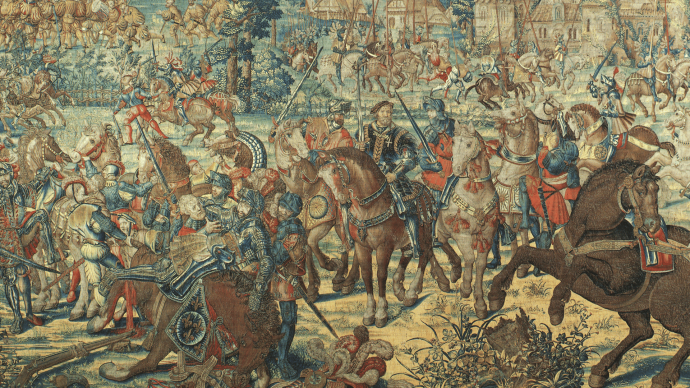- Itinerari
Angera, the lady of the Lake
The village of Angera is one of the many beautiful spots in the province of Varese, located on the eastern shore of Lake Maggiore.
The settlement developed in Roman times, between the 1st and 2nd centuries AD, thanks to trade on the Verbano, with Angera being an important port on the lake for the exchange of goods, such as stone and timber.
To visit the town, you can follow a route of more than forty stops. Together they form the so-called "Museo Diffuso" with artistic and historical works and scenic wonders.
Stop 1: Chiesa Parrocchiale di S. Maria Assunta
Stop 2: Fanciullo di Angera di RAVO
Stop 3: Villa Liberty
Stop 4: Porto Austriaco
Stop 5: Oasi della Bruschera
Stop 6: la Rocca
Mostra cosa c'è nelle vicinanze:
Itinerary stages
Santa Maria Assunta
Starting from the Piazza Parrocchiale, an ancient public area dating back to Roman times, you can visit the church of Santa Maria Assunta, which was built upon the earlier church that had existed in the 13th century. The church is made of Angera stone, which is famous for its light colours.
Fanciullo di Angera
At Via Greppi n. 16, there is a painting called the Fanciullo di Angera, a reproduction of a Caravaggio work, that was created in 2016 by the genius of artist Andrea Ravo Mattoni, who used a spray paint technique. The work depicts a young boy holding a basket of fruit, including grapes, a symbol of the abundance of the ancient village's agriculture and wine production. Other works by artist Ravo grace the walls of Angera, such as Ludovico il Moro and a detail of the Hall of Justice at the Rocca di Angera.
Villa Liberty
Descending toward the lake from Via Marconi, you will reach Piazza Garibaldi and Villa Liberty. This villa is one of the local examples of Art Nouveau architecture that started to spread throughout the province of Varese in the early 1900s. The building features typical elements such as a turret, floral paintings and interior frescoes. Today the villa is also home to a contemporary art gallery.
Porto Austriaco
Walking along Piazza Garibaldi, you will see the Porto Austriaco (Austrian Harbour), built during Habsburg rule. It was inaugurated in 1819 to facilitate trade and allow the various vessels to dock easily. The structure has imposing granite walls.
Oasi della Bruschera
Following the lakefront promenade to the east, you’ll observe the Bruschera Oasis, located south of the village, which is the last strip of flooded forest in Lombardy, and therefore characterised by wet forests, meadows, springs, ponds and small agricultural plots. From the Bruschera Oasis you can also admire Isolino Partegora, a small island in the middle of the gulf covered with poplars and surrounded by marsh reeds.
Rocca di Angera
covered with poplars and surrounded by marsh reeds.
You can’t say you have visited Angera, however, without seeing the world-famous Rocca, which dominates the lake and faces the town of Arona, located on the Piedmont shore. Inside the building, there is the noble court, which houses archaeological artefacts found in Angera and a wine press for crushing grapes from the wonderful vineyards in the area.
Standing out between the southern and western city walls is the Giovanni Visconti Tower, erected in the first half of the 14th century. On the western side of the tower is the archbishop's coat of arms, the serpent surmounted by the mitre with the initials "IO.VI."
One of the important rooms overlooking the courtyard is the Hall of Justice, where there is a cycle of frescoes painted by the Master of Angera after the Battle of Desio in 1277, won by Ottone Visconti.
Walking through the interior rooms of the Borromean wing, you will come to the Hall of Ceremonies, a large room with a wooden ceiling, which houses fragments of wall paintings from the Palazzo Borromeo in Milan. They were moved here after a bombing that destroyed part of the building. The paintings constitute one of the most important examples of late Lombard Gothic painting, with La Raccolta delle melagrane (The Harvest of Pomegranates), Le storie di Esopo (Aesop’s Fables) , and Figure maschili e femminili in un battello (Male and Female Figures in a Boat).
You can also walk in the garden, which is spread out all around the pre-existing chapel and consists of several parts, according to medieval custom: the grove, the garden of small herbs, the garden of princes and the verziere, all connected by trails.
The grove had herbs and fruits used by the monks for their medicines. Its products were for the benefit of the whole population.
The small herb garden has medicinal herbs in raised beds, while the princes' garden is dedicated to pure aesthetics. In the Middle Ages, it was only accessible to the family of the lord of the castle and was a place of conversation and socialising that was reserved for just a few. The verziere is an orchard garden, where ornamental and fruit plants, exotic and native, were grown.
